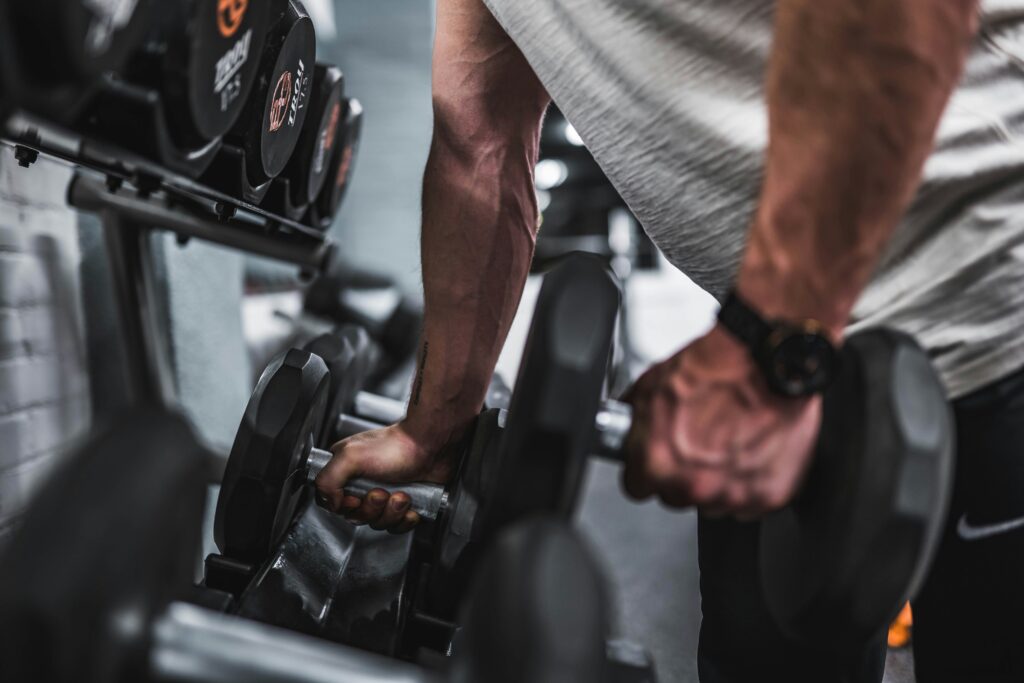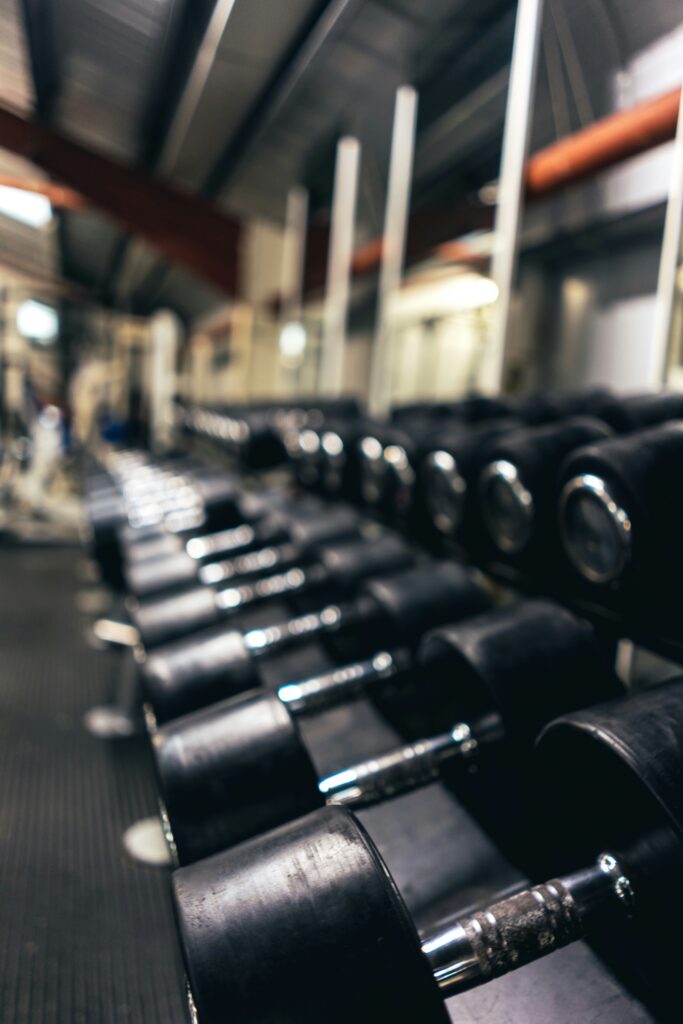Are you tired of searching for the perfect body workout that will give you the results you desire? Look no further, because we have the ultimate guide for you! Whether your goal is to build muscle, lose weight, or increase your endurance, this article will provide you with all the information you need. From the best exercises for each muscle group to tips on creating a personalized workout plan, we have got you covered. Say goodbye to endless trial and error, and say hello to the most effective body workout you’ve been waiting for. It’s time to take your fitness journey to the next level!
Setting Fitness Goals
Identify your fitness goals
Before embarking on any fitness journey, it’s crucial to clearly identify your fitness goals. Ask yourself what you want to achieve through your workouts. Are you looking to lose weight, build muscle, enhance endurance, or simply improve overall fitness? Take some time to reflect on your objectives and write them down. Having a clear vision of what you want to accomplish will help guide your workout choices and keep you motivated in the long run.
Create a plan to achieve your goals
Once you have identified your fitness goals, it’s time to create a well-thought-out plan. Break down your goals into smaller, achievable targets that you can work towards each week or month. For example, if your ultimate goal is to run a marathon, start by setting smaller goals, like running a certain distance without stopping or improving your mile time. Outline the steps you need to take to reach each target and establish a timeline. Having a plan in place will provide structure and direction for your workouts.
Set realistic and measurable targets
While it’s important to dream big and aim high, it’s equally important to set realistic and measurable targets. Setting goals that are within reach will boost your confidence and prevent feelings of frustration. For example, instead of aiming to lose 20 pounds in a month, set a target of losing 1-2 pounds per week. Additionally, make sure your goals are measurable so that you can track your progress. This can be done by setting specific targets, like running a 5k in under 30 minutes or performing a certain number of push-ups. By setting realistic and measurable targets, you’ll be able to celebrate your achievements along the way and stay motivated.
Types of Body Workouts
Cardiovascular exercises
Cardiovascular exercises, also known as cardio, are workouts that get your heart pumping and your blood flowing. These exercises are vital for improving cardiovascular health, burning calories, and increasing stamina. Some popular cardiovascular exercises include running, cycling, swimming, and dancing. Aim to incorporate at least 150 minutes of moderate-intensity aerobic activity or 75 minutes of vigorous-intensity aerobic activity into your weekly routine. Remember to start slowly and gradually increase the intensity and duration of your cardio workouts to avoid overexertion.
Strength training exercises
Strength training exercises are designed to enhance muscular strength, endurance, and power. These workouts involve resistance or weight-bearing exercises that target various muscle groups. Examples of strength training exercises include weightlifting, bodyweight exercises, and resistance band workouts. Aim to include strength training exercises at least two to three times a week, allowing each muscle group at least one day of rest in between sessions. Gradually increase the amount of weight or resistance as your strength improves to continue challenging your muscles.
Flexibility exercises
Flexibility exercises focus on improving your range of motion, joint mobility, and muscle flexibility. These workouts are often overlooked, but they play a crucial role in preventing injuries and improving overall physical performance. Examples of flexibility exercises include yoga, Pilates, and stretching routines. Aim to incorporate stretching exercises into your workout routine at least two to three times a week. Remember to warm up before performing stretches to minimize the risk of injury, and hold each stretch for at least 15–30 seconds.

This image is property of images.unsplash.com.
Creating a Balanced Workout Routine
Include all major muscle groups
A balanced workout routine should target all major muscle groups in the body. This ensures that you develop overall strength and avoid muscle imbalances. Focus on exercises that target the chest, back, arms, shoulders, legs, and core. For example, include exercises like push-ups, rows, bicep curls, overhead presses, squats, lunges, and planks in your routine. Vary the exercises and equipment used to work different muscle groups to keep your workouts engaging and effective.
Determine the appropriate intensity
The intensity of your workouts is crucial for achieving desired results. It’s essential to find the right balance between pushing yourself and avoiding overexertion. You can gauge the intensity of your workouts using the talk test. During moderate-intensity exercise, you should be able to carry on a conversation, while during vigorous-intensity exercise, you should be breathing hard and finding it difficult to talk. Gradually increase the intensity of your workouts as your fitness level improves, but always listen to your body and avoid pushing yourself beyond your limits.
Incorporate variety to prevent boredom
One of the keys to maintaining a consistent workout routine is to keep things interesting and fun. Incorporating variety into your workouts not only prevents boredom but also challenges different muscle groups, prevents plateaus, and improves overall fitness. Try new exercises, change up the order of your routine, or participate in different fitness classes or activities. This can include activities like hiking, swimming, or playing a team sport. By keeping your workouts diverse and enjoyable, you’ll be more likely to stick with your routine in the long term.
Warm-up and Cool-down
Importance of warm-up exercises
Before diving into your workout, it’s essential to warm up your muscles and prepare your body for exercise. Warm-up exercises gradually increase your heart rate, circulation, and body temperature, loosening up the joints and increasing flexibility. A proper warm-up reduces the risk of injury, improves performance, and mentally prepares you for the upcoming workout. Spend 5–10 minutes engaging in activities such as light jogging, jumping jacks, or dynamic stretches to warm up your muscles and get your body ready to move.
Proper technique for warm-ups
To ensure an effective warm-up, it’s important to focus on proper technique. Start by engaging in low-intensity activities that mimic the movements of your workout. For example, if you plan to run, start with a slow jog. Gradually increase the intensity as your body warms up. Additionally, incorporate dynamic stretches into your warm-up routine. These stretches involve moving parts of your body through a full range of motion to improve flexibility. Examples include arm circles, leg swings, and torso twists. Remember to listen to your body and adjust the intensity of your warm-up based on your fitness level and the specific workout you’ll be performing.
Cool-down exercises to aid recovery
Just as warming up is important, cooling down after your workout is equally essential. Cooling down helps gradually lower your heart rate, allows your body to recover, and prevents post-workout muscle soreness. Spend 5–10 minutes engaging in low-intensity activities such as walking, gentle stretching, or foam rolling. This will help improve blood flow, remove metabolic waste products from your muscles, and promote relaxation. Cooling down also provides a transition from an intense workout to normal daily activities, preventing dizziness or lightheadedness.

This image is property of images.unsplash.com.
Proper Form and Technique
Benefits of maintaining proper form
Maintaining proper form and technique during exercises is crucial for maximizing the effectiveness of your workouts and preventing injuries. When you perform exercises in the correct form, you engage the targeted muscles more effectively and minimize stress on your joints. This leads to better muscle activation, improved strength gains, and a reduced risk of strains or sprains. Additionally, proper form ensures that you are targeting the intended muscle groups, helping you achieve your fitness goals more efficiently.
Tips for correct form during exercises
To ensure you’re maintaining proper form during exercises, follow these tips:
- Pay attention to your posture: Keep your spine in alignment, shoulders back and down, and core engaged.
- Focus on breathing: Inhale through your nose and exhale through your mouth, coordinating your breath with your movements.
- Start with lighter weights: Gradually increase the weight or resistance as your form improves and you become more comfortable with the exercise.
- Use mirrors or workout videos: Utilize mirrors or instructional workout videos to visually assess and correct your form.
- Seek professional guidance: When starting out, consider working with a certified personal trainer to learn proper form and technique for different exercises. They can provide individualized guidance and correct any errors in your form.
Avoiding common workout mistakes
It’s common to make mistakes when starting a new workout routine. Here are some common workout mistakes to avoid to ensure you’re getting the most out of your workouts:
- Overtraining: Give your body adequate time to rest and recover between workouts to prevent burnout and injury.
- Ignoring feedback from your body: Pay attention to any pain, discomfort, or fatigue during your workouts. If something feels off, adjust your technique or consult a professional.
- Neglecting proper nutrition and hydration: Fuel your body with nutritious foods and stay adequately hydrated to support your workouts and aid in recovery.
- Skipping warm-up and cool-down: Always warm up your muscles before exercising and cool down afterward to prevent injuries and enhance recovery.
- Focusing on quantity over quality: Quality repetitions with proper form are more beneficial than rushing through exercises with poor form. Focus on technique and gradually increase intensity or weight as you progress.
Rest and Recovery
Understanding the importance of rest
Rest and recovery are essential components of any effective workout routine. When you exercise, you create micro-tears in your muscles, and rest allows your body to repair and rebuild these tissues. Additionally, rest helps prevent overuse injuries, reduces muscle soreness, and restores energy levels. Without adequate rest, you may experience decreased performance, an increased risk of injury, and feelings of burnout. Incorporating rest days into your routine is vital for long-term progress and maintaining overall health and well-being.
Recommendations for rest days
The recommended number of rest days per week will vary depending on your fitness level, workout intensity, and goals. However, it’s generally recommended to have at least one to two rest days per week. On these rest days, avoid intense workouts and focus on gentle activities such as walking, yoga, or stretching. Rest days allow your body to recover and adapt to the demands of exercise, leading to improved performance during subsequent workouts.
Incorporating active recovery exercises
While rest days are important, active recovery exercises can also play a beneficial role in your routine. Active recovery involves engaging in light physical activity to promote blood flow, reduce muscle stiffness, and aid in recovery. This can include activities such as swimming, cycling, or low-intensity yoga. Active recovery exercises should be performed at a lower intensity than your regular workouts and should not be overly strenuous. By incorporating active recovery into your routine, you can enhance your overall fitness and reduce the risk of injury.

This image is property of images.unsplash.com.
Nutrition and Hydration
Eating a balanced diet
Proper nutrition is foundational to your fitness journey. Fueling your body with a balanced diet ensures that you have the energy and nutrients needed to support your workouts and aid in recovery. Focus on consuming a variety of whole foods, including lean proteins, complex carbohydrates, healthy fats, and plenty of fruits and vegetables. Aim to include a source of protein with each meal to support muscle repair and growth. Additionally, prioritize whole grains, nuts, and seeds for sustained energy and include ample fiber to support digestion.
Proper hydration for optimal performance
Staying adequately hydrated is vital for optimal performance during your workouts. Water not only helps regulate body temperature but also supports nutrient absorption, joint lubrication, and waste removal. The amount of water you need will vary depending on factors such as your body weight, activity level, and environmental conditions. As a general guideline, aim to drink at least 8 glasses (64 ounces) of water per day, and increase your intake during periods of intense physical activity. Listen to your body’s signals of thirst, and drink water consistently throughout the day.
Timing meals and snacks for workouts
When it comes to fueling your workouts, timing is key. Pre-workout meals and snacks should provide a combination of carbohydrates, proteins, and healthy fats to sustain energy levels and enhance performance. Aim to eat a meal 2-3 hours before your workout to allow for proper digestion. If you have less time, opt for a smaller snack containing easily digestible carbohydrates and a small amount of protein about 30-60 minutes before exercise. Post-workout meals should focus on replenishing glycogen stores and promoting muscle repair. Consume a combination of carbohydrates and quality proteins within 30–60 minutes after exercising for optimal recovery.
Tracking Progress
Benefits of tracking progress
Tracking your progress is essential to staying motivated and ensuring that you’re moving closer to your fitness goals. When you can visually see the progress you’ve made, you’re more likely to stay committed to your workout routine. Tracking progress also allows you to identify areas that need improvement and celebrate your achievements along the way. Whether it’s tracking your weight, measurements, or fitness milestones, having tangible evidence of your progress provides a sense of accomplishment and helps you stay on track.
Different methods for tracking
There are various methods available for tracking your fitness progress. Here are a few common ones:
- Body measurements: Measure key areas of your body, such as your waist, hips, thighs, and arms, to track changes in inches or centimeters.
- Weight: Use a scale to track your weight on a regular basis. Remember that weight alone does not always reflect changes in body composition, so consider other metrics as well.
- Fitness assessments: Periodically assess your fitness level by performing exercises such as timed runs, push-ups, or flexibility tests. Repeat these assessments every few weeks to gauge improvement.
- Workout journals: Keep a record of your workouts, including exercises performed, sets, reps, and weights used. This allows you to track progress in strength and endurance over time.
- Progress photos: Take photos of yourself at regular intervals to visually compare changes in your physique or posture.
Using technology and fitness apps
Technology and fitness apps can be valuable tools for tracking progress. Many fitness trackers and smartwatches provide data on heart rate, calories burned, and distance covered during workouts. These devices can sync with apps on your smartphone to provide comprehensive reports and progress updates. Additionally, there are numerous fitness apps available that can track workouts, offer personalized training plans, and provide nutritional guidance. Explore different apps and devices to find the ones that best align with your fitness goals and preferences.

Common Challenges and Solutions
Overcoming exercise plateaus
It’s common to hit a plateau in your fitness journey where you no longer see progress or improvements. To overcome exercise plateaus, it’s important to introduce variety into your workouts, change up the intensity or duration of exercises, or try new activities. Cross-training, which involves participating in different types of exercises or sports, can also help break through plateaus and challenge your body in different ways. Additionally, consider consulting a fitness professional who can provide guidance on modifying your routine, suggest new exercises, or create a personalized plan to overcome plateaus.
Dealing with muscle soreness
Muscle soreness, also known as delayed onset muscle soreness (DOMS), is a common occurrence after intense or new workouts. To alleviate muscle soreness, try the following techniques:
- Rest and recover: Give your muscles time to recover by incorporating rest days into your routine.
- Light exercise: Engage in low-intensity activities such as walking or gentle stretching to promote blood flow and reduce muscle stiffness.
- Apply heat or cold therapy: Use a heating pad or take a warm bath to help relax muscles, or apply ice packs to reduce inflammation.
- Massage or foam rolling: Use a foam roller or receive a massage to increase blood circulation and promote muscle recovery.
- Proper nutrition: Ensure you’re consuming enough protein, as it aids in muscle repair. Additionally, consider incorporating anti-inflammatory foods into your diet to reduce inflammation.
Finding motivation to stick with your workout routine
Staying motivated to stick with your workout routine can be challenging at times. Here are some strategies to help you stay motivated:
- Set achievable goals: Break down your ultimate fitness goals into smaller, attainable targets. Celebrate each milestone you achieve.
- Find a workout buddy: Exercising with a friend or joining a fitness class can provide accountability and make workouts more enjoyable.
- Change your surroundings: Explore different workout environments, such as outdoor parks or gyms, to keep things fresh and exciting.
- Reward yourself: Set up a system of rewards for accomplishing your fitness goals. Treat yourself to something you enjoy after reaching a milestone.
- Track your progress: As mentioned earlier, tracking your progress visually can help you stay motivated. Use progress photos or a workout journal to remind yourself of how far you’ve come.
Safety and Injury Prevention
Importance of proper warm-up and cool-down
Proper warm-up and cool-down sessions are essential for injury prevention. By warming up, you increase blood flow to your muscles, improve flexibility, and mentally prepare yourself for the workout ahead. This reduces the risk of strains, pulls, or muscle imbalances. Cooling down allows for a gradual decrease in heart rate and helps flush out metabolic waste products from the muscles, reducing the risk of post-workout soreness. Always make time for warm-up and cool-down exercises to minimize the chances of injury.
Recognizing and addressing signs of injury
Despite taking precautionary measures, injuries can still happen. It’s important to be aware of the signs and symptoms of potential injuries and address them promptly. Common signs of injury include sharp or shooting pain, persistent discomfort, swelling, or reduced range of motion. If you experience any of these symptoms, it’s crucial to stop the activity causing the pain, rest, and seek professional advice. Ignoring signs of injury can lead to further damage and prolong your recovery time. Consult a healthcare professional or a certified trainer with experience in injury management for appropriate diagnosis and treatment.
Seeking professional advice if needed
If you have specific health concerns, pre-existing injuries, or are new to exercise, it’s recommended to seek professional advice before starting a new workout routine. A certified personal trainer, physical therapist, or sports medicine professional can guide you in creating a safe and effective program that takes into account your individual needs and goals. They can assess your fitness level, identify any limitations or imbalances, and provide guidance on proper form, technique, and progression. By working with a professional, you can minimize the risk of injury, maximize your results, and ensure a positive fitness experience.
In conclusion, the most effective body workout involves setting clear fitness goals, creating a well-planned exercise routine, and incorporating variety to keep things interesting. Proper warm-up and cool-down sessions, along with maintaining proper form and technique, are crucial for injury prevention. Rest, nutrition, hydration, and tracking progress are equally important elements for success. By overcoming challenges, staying motivated, and seeking professional advice when needed, you’ll be on your way to achieving your fitness goals and leading a healthier, happier life.

